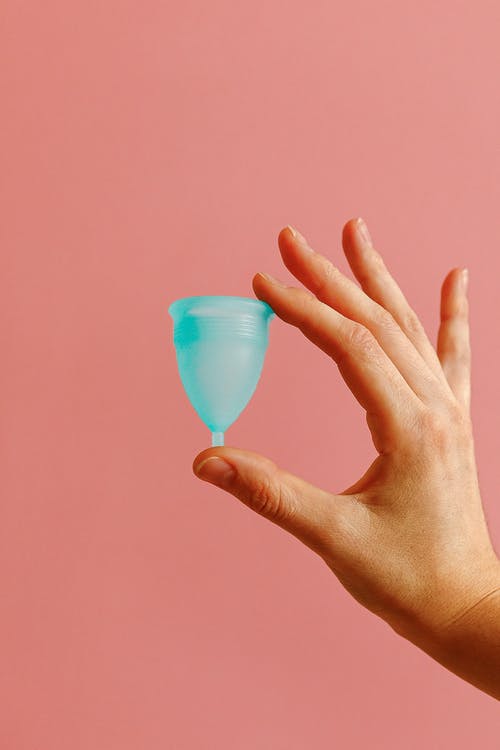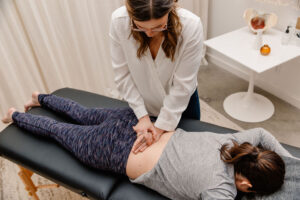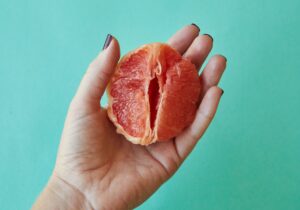
4 Ways to Have a More Sustainable Period
Having a sustainable period may not be the first thing that comes to mind when Aunt Flow comes around, but it is something important to consider. Because of their design, menstrual products happen to create a lot of plastic waste. A lot.
How Much Waste is Created from Menstrual Products?
According to National Geographic, it is estimated that a single menstruating individual will use anywhere from 5 to 15 thousand pounds of pads or tampons over the course of their lifetime. Most of which, unfortunately, ends up in landfills. Not to mention that in America alone, 5.8 billion tampons were purchased in 2018. That’s only a third of the global total.
The design of these products almost always involves plastic. Plastic wrappings, plastic applicators, even plastic in the product that has such close proximity to (or is actually inserted into) your body. And these plastics aren’t usually recyclable due to obvious sanitary reasons. Another issue is that because plastic is used in the actual product; when these are accidentally or knowingly flushed down the toilet, plastic chemicals end up in the ocean.
Yep; landfills aren’t the only place where plastic menstrual products end up. All types of menstrual products; pads, tampons, and panty liners, are flushed more often than people think. It is estimated that about 2 billion menstrual products are flushed in the country of Great Britain alone, every year. No, these products are not meant to be flushed, ever! Unfortunately, due to the topic of periods still being a bit taboo in society, many people don’t even know they aren’t supposed to flush these items. If you were one of those people, don’t worry; you know better now! You are not at fault for the lack of social acceptance of this topic.
You might be thinking, “Why don’t the brands selling pads or tampons just fix their design to let people have a more sustainable period?” Well, there are many reasons. Besides the design of these products being rooted deep in culture and shame, companies that are already making a profit from these products won’t see an issue to change unless they are forced to.
Don’t get too upset yet! Although it may be disheartening to think that you must be the one changing your habits in order to work towards a resolution of this issue, just know that there are actually a lot of benefits for you by changing which products you use.
Buying reusable products is less costly for you in the long run. You won’t have to worry about “running out of” such an essential item or going to the store every so often to restock. If leaving menstrual product remnants in public trash cans makes you a bit embarrassed, you can say goodbye to that too. You no longer have to worry about putting plastic near or inside this sensitive area. And many of these sustainable products are more comfortable and are less of a hassle than regular pads and tampons.
And, you can be happy not to support companies who are too absorbed in profit to make a positive environmental change in their products.
So, what kind of sustainable period products can you feel good about using and will allow you to have a more sustainable period?
sustainable period products - menstrual cup
SUSTAINABLE PERIOD PRODUCT #1: REUSABLE MENSTRUAL CUP
This is a silicone, rubber, or latex “cup,” usually bell-shaped, that can last a pretty long time; usually around 10 years. Therefore, this is definitely a great product to consider if you’d like to have a more sustainable period. They are also very affordable, ranging in price from $10 to $40 depending on the brand you buy. They come in multiple sizes in order to be effective depending on the person and their personal health history.
Menstrual cups can be worn for overnight protection and can be worn anywhere from 6 to 12 hours. It’s recommended that you remove the cup by then, or earlier to empty it out depending on your personal flow.
If you’re worried it won’t be enough for your flow, consider this: Menstrual cups can hold around 1 to 2 ounces of blood, while a tampon can only hold a third of an ounce. And, most people claim they don’t feel the cup at all when inserted.
As you can see in the picture above, the cup has a sort of tail, which is used as a handle for removal, similar to how you remove a tampon.
How do you maintain the menstrual cup? Well, depending on where you are, you may use different methods to clean it. At home, you can dump the blood into the toilet, rinse it with water, and use a gentle, oil-free, fragrance-free soap to clean it. While in a public restroom, you may dump the blood into the toilet, use toilet paper to wipe it clean (making sure there’s no toilet paper left on it afterward), and reinsert if needed.
The only complaint that some people have about the cup is the learning curve with using it. It does create a sort of suctioned seal while inserted, and so learning how to properly insert it takes practice. Removal also involves slightly folding the cup to release that suction; and so again, practice makes perfect. However, if you’ve used tampons before, you may already be used to this learning curve process.
SUSTAINABLE PERIOD PRODUCT - REUSABLE CLOTH PADS
SUSTAINABLE PERIOD PRODUCTS #2: REUSABLE MENSTRUAL PADS
Another great product that may help you have a more sustainable period is a reusable pad. If you aren’t keen on the idea of inserting tampons or a menstrual cup; or perhaps those just don’t work right for your flow, this may be a better option for you. These also come in a couple different sizes to adjust for your flow (heavy days, moderate days, even panty liner sizes).
There are a few different styles. There are some that are the pad, that has a latch to go around your underwear (such as in the picture above). Others come in two pieces, with a sort of “holder” piece and then a reusable, washable piece that is inserted into the holder; removed later for washing. Many of them come in different colors and patterns, too!
Many brands of reusable pads claim to be more absorbent than their disposable counterparts. As for upkeep, most people simply wash theirs with soap and water or throw it in the wash like normal (thoroughly rinsing them first to avoid stains).
These can cost anywhere from $15 to $30 depending on the brand.

SUSTAINABLE PERIOD PRODUCT #3: REUSABLE MENSTRUAL UNDERWEAR
Reusable menstrual underwear is…well, just underwear, but with a more absorbent middle portion. They look and feel like normal underwear, and they come in a multitude of sizes, absorbances, colors, and styles. If you want simple, neutral period underwear, they have that. If you want fun, lacey, colorful period underwear, they have that too. They come in many styles, including boyshorts, bikini, high-waisted, cheeky, boxers, boxer briefs, and even thongs. So no matter what underwear style you feel most comfortable in, there is an absorbent pair out there for you.
And there’s a wide range of flow absorbency, from super light to super heavy.
These especially have become popular recently, and have raging reviews online. Many claim they are much more comfortable than other menstrual product options because it feels like you’re just wearing underwear. With these, you won’t have to worry about a pad shifting around or crumpling during physical activity. And if you work out or play sports often, having absorbent underwear is a big plus!
The upkeep is very easy too; most brands just recommend that you first rinse them well after use, and then you can choose to either hand wash them or throw them in with your other laundry (many brands include a wash bag for them to separate the laundry).
This option is admittedly a bit pricey considering you’ll likely buy more than one pair (ranging from $20 to $30 or more per pair), but also research the brand you’re purchasing from; many of them donate some portion of their profit to help give assistance to menstruating people in developing countries.
Brands such as Knix and Thinx both have partnered with different nonprofit organizations for good causes. For example, Knix has partnered with the Black Women’s Health Imperative and the Life After Birth Project; and Thinx has partnered with organizations such as Girls Inc., Safe Horizon, and the Alliance of Border Collaboratives. So not only will you have a more sustainable period, but you’ll be supporting other people all over the world by choosing reusable underwear brands that care.
SUSTAINABLE PERIOD PRODUCT #4: ORGANIC COTTON TAMPONS
If none of these options listed so far just don’t click with you, fear not! If you must truly stick to your usual tampon routine, that’s okay! There is still a way to have a more sustainable period.
There are brands such as Lola, that work to create a positive change in period products. This brand is all about creating convenient, safe, and eco-friendly products.
Lola sells organic cotton tampons that come in biodegradable wrappers. The tampons are made only from organic cotton. No chemicals, synthetics, dyes, or plastics; which make them fully biodegradable once you toss them! Even the box they come in is made from recycled materials. They come in three absorbency levels: regular, super, and super plus.
You can choose to insert these without an applicator, or if you’re more comfortable with the use of an applicator, there are a reusable options.
As you can tell, there are lots of products available that can help you have a more sustainable period. And not only do these brands make an effort to be eco-friendly, sustainable, and inclusive, but many (if not most of them) work towards other important causes; such as being affordable or accessible to those who have a harder time reaching such vital products. As mentioned before, many of these brands work towards helping non-profit organizations as well. So by making the decision to switch to more sustainable period products, you can know that not only are you doing good for yourself and the planet, but also other people in need.
For all things period-health-related and more, head over to my Instagram! I am passionate about educating and helping you on your personal health journey. Whether it’s about periods, menopause, pelvic floor, bladder health, etc., I’m always available for questions in my DM’s!
More content you may like:
Some of the links on this page may be affiliate links. Laura Meihofer’s LLC is a participant in the Amazon Associates Program and others, as an affiliate advertising program designed to provide a means for sites to earn advertising fees by linking to products Laura organically uses and trusts. If you purchase a product through an affiliate link, your cost will be the same, but Laura will automatically receive a small commission. Your support is greatly appreciated and helps her spread the message about pelvic health!








Sorry, the comment form is closed at this time.